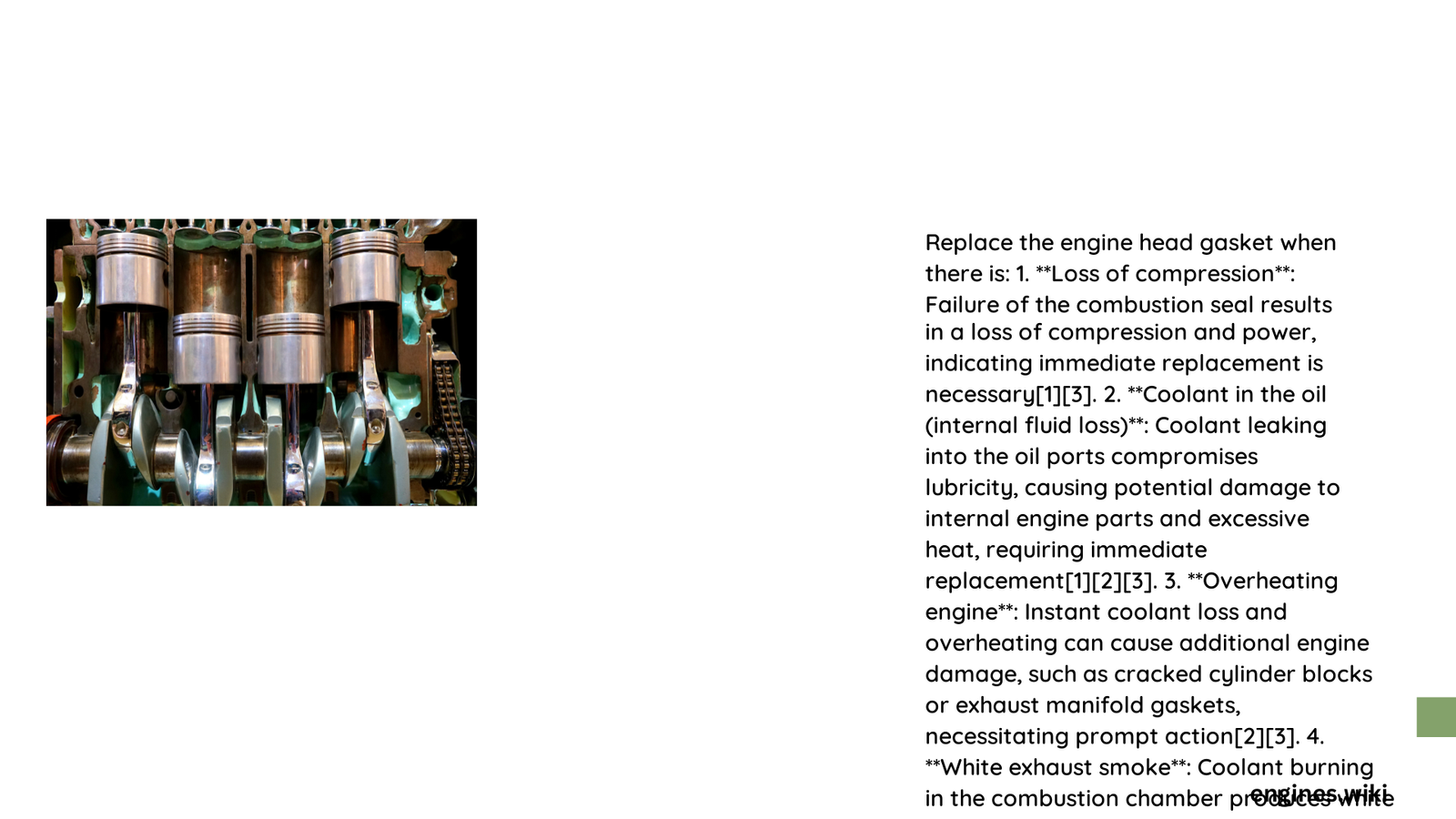Engine head gasket failure can be a catastrophic issue for vehicle owners, potentially causing extensive and expensive damage if not addressed promptly. Recognizing the precise symptoms and understanding when to replace the head gasket is crucial for preventing complete engine breakdown, preserving vehicle performance, and avoiding costly long-term repairs.
What Are the Primary Indicators of Head Gasket Failure?
How Do Fluid Contamination Signals Reveal Head Gasket Problems?
Head gasket issues often manifest through distinct fluid contamination symptoms:
| Contamination Type | Specific Indicators | Severity Level |
|---|---|---|
| Coolant Leakage | External engine leaks | Moderate |
| Oil Contamination | Milky/mayo-like substance on dipstick | High |
| Coolant Mixing | Bubbles in radiator reservoir | Critical |
Key Fluid Contamination Signs
- White or gray residue around engine components
- Consistent low coolant levels without visible external leaks
- Unusual color changes in engine fluids
What Performance Symptoms Suggest Head Gasket Replacement?
Performance degradation provides critical diagnostic insights:
- Engine Overheating Patterns
- Frequent temperature spikes above 220°F
- Inconsistent cooling system performance
-
Rapid temperature fluctuations
-
Power and Compression Indicators
- Noticeable reduction in engine power
- Rough or unstable engine idle
- Compression test revealing significant pressure loss
How Can Smoke Signals Indicate Head Gasket Failure?
Exhaust smoke offers valuable diagnostic information:
- White Smoke: Indicates coolant entering combustion chambers
- Blue/Gray Smoke: Suggests oil leakage into combustion areas
- Consistent Smoke Production: Signals potential comprehensive gasket failure
What Are the Financial Considerations for Head Gasket Replacement?
Cost factors vary significantly based on vehicle complexity:
| Cost Component | Estimated Range |
|---|---|
| Gasket Parts | $50 – $500 |
| Labor Costs | $500 – $2,000 |
| Potential Additional Repairs | $1,000 – $5,000 |
When Should Immediate Replacement Be Considered?
Critical scenarios demanding immediate head gasket replacement:
– Persistent coolant contamination
– Consistent engine performance degradation
– Multiple overheating episodes
– Compression test revealing significant leakage
– Visible external and internal fluid mixing
Professional Diagnostic Recommendations
- Conduct comprehensive pressure and leak-down tests
- Analyze coolant and oil contamination levels
- Evaluate overall engine performance metrics
- Consult certified automotive technicians for precise diagnosis
Preventive Maintenance Strategies
- Regular cooling system inspections
- Timely coolant replacements
- Monitor engine temperature consistently
- Address overheating issues immediately
- Use high-quality engine coolants
Conclusion

Recognizing when to replace an engine head gasket requires careful observation, professional diagnostic tools, and understanding complex automotive systems. Proactive maintenance and early intervention can save substantial repair costs and prevent catastrophic engine failure.
Warning: Never attempt head gasket replacement without proper technical expertise. Always consult professional automotive technicians.
